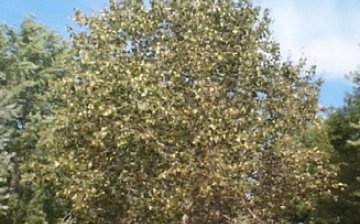Balsam poplar for parks and gardens
Poplars are the trees most commonly used for urban landscaping. They are undemanding to care and grow very quickly, sometimes giving growth of up to 1 meter during the growing season. These trees belong to the willow family, there are more than 100 species of it, among which is the balsam poplar. It got this name for the pleasant aroma emanating from the tree when the buds begin to burst and the leaves grow. This plant comes from North America, but it is common in Europe and Russia.
Balsamic poplar grows up to 30 meters in height and up to 5 meters in diameter. Its life span is 300-400 years. The tree blooms before the leaves appear, throwing out long, up to 15 cm catkins. In the middle lane, this usually occurs in April-May. The leaves can be up to 12 cm long, ovoid and dark green on top. Below they have a kind of light white coating. In spring, the leaves are very sticky due to the balsamic bloom. This poplar is famous for its gas resistance, which is why it is often used for urban landscaping and planting along roads. Its main enemies are poplar moth and rust.
Balsamic poplar has healing properties. The balm from his kidney contains essential fatty acids and has an effect similar to that of propolis. It can be used as an anti-inflammatory, wound healing, antipruritic, analgesic, diaphoretic and astringent. Of course, it is not recommended to use balm from a tree growing in the city, it absorbs too many carcinogens, heavy metal salts and other harmful substances.



